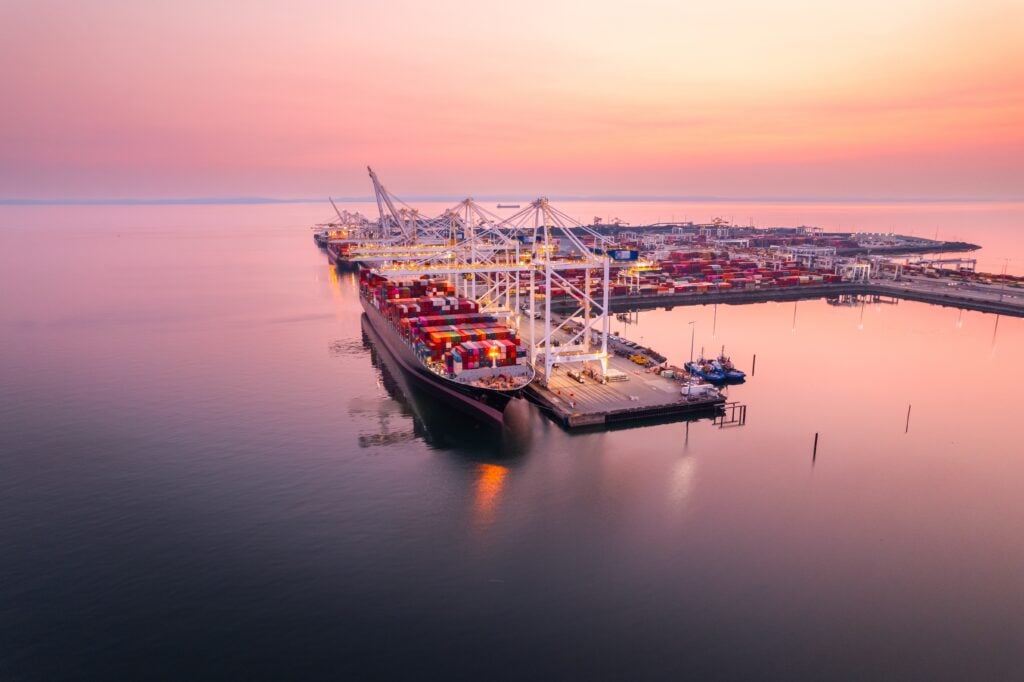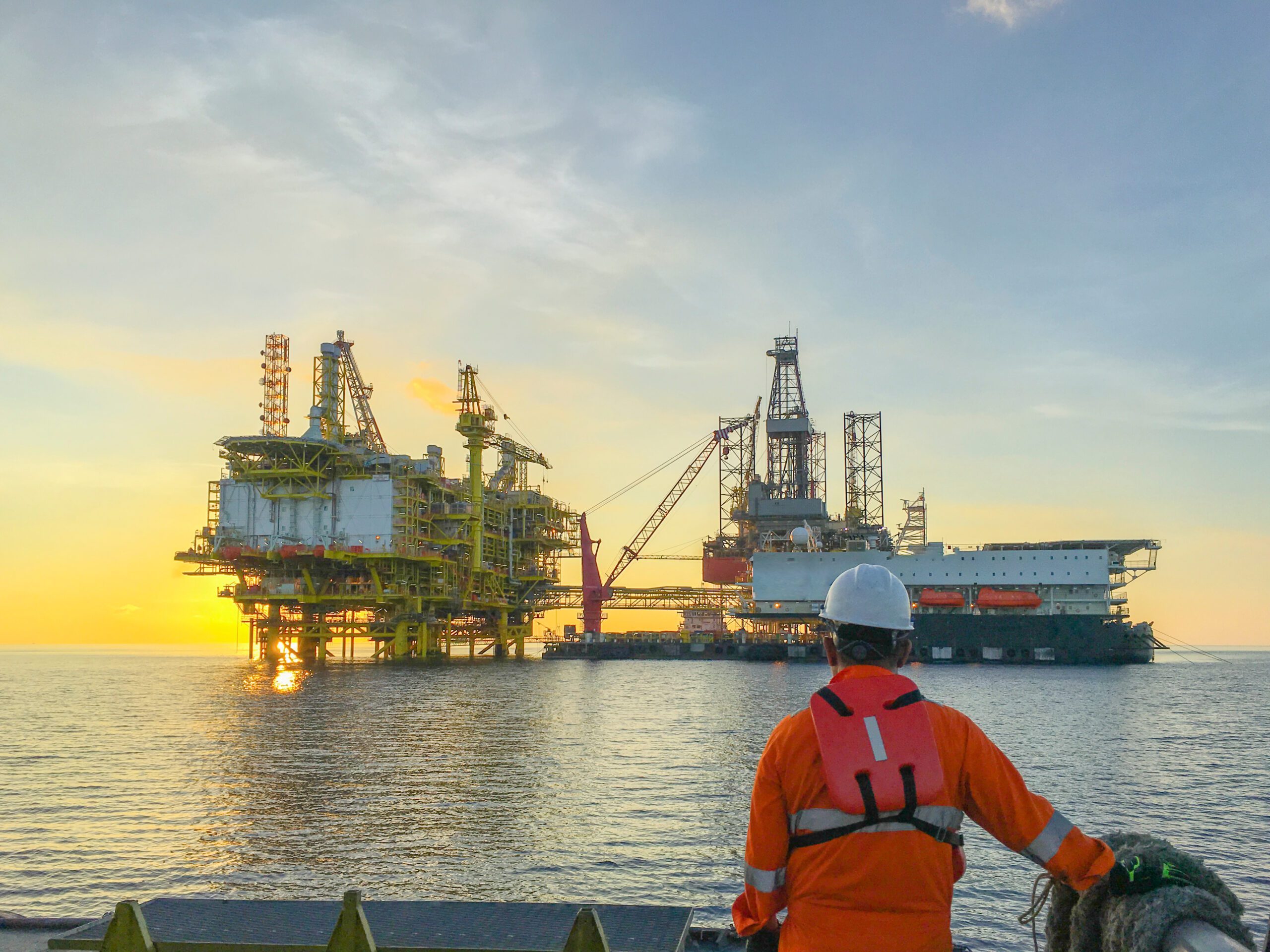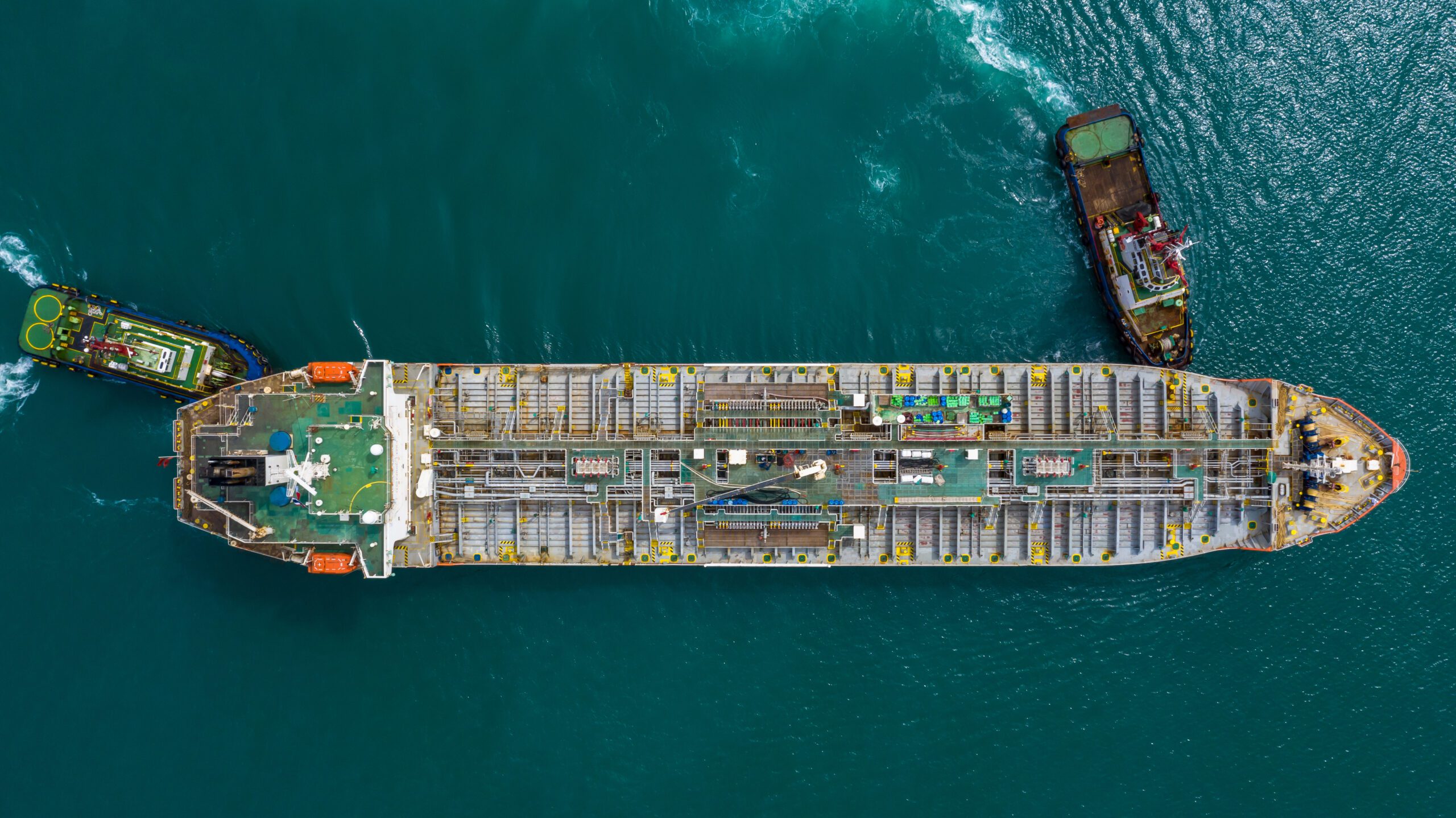In an era increasingly defined by urgent environmental imperatives, the global spotlight is shining brighter than ever on industrial emissions and the pressing need to reduce our collective carbon footprint. The escalating concerns surrounding climate change have amplified regulator measures, including emissions trading systems (ETS).
The maritime industry, the backbone of global trade, is also a significant contributor to global emissions particularly greenhouse gas (GHG) emissions like CO2 , SOx , and NOx. As regulatory pressure tightens and the demand for a cleaner environment grows, the maritime sector finds itself at a crucial juncture, facing significant pressure to decarbonize.
This blog post aims to provide comprehensive insight into the Emissions Trading System (ETS) and its profound implications for the maritime industry, examining its workings, the specific regulations governing it, and how companies like Mr. Marine are supporting this essential transition towards a more sustainable future.
What are Emission Trading Systems?
At its core, an Emissions Trading System is a market-based approach designed to control pollution by providing economic incentives for achieving reductions in emissions. It operates on a cap-and-trade principle. A cap is set on the total amount of certain greenhouse gases that can be emitted by specific sectors or companies. Within this cap, allowances to emit are either allocated or auctioned. Each allowance typically represents one tonne of CO2 equivalent. This system provides a flexible and cost-effective way for governments to achieve their climate targets while allowing firms to find the most efficient way to reduce their emissions.
How does an Emission Trading System work?
Companies subject to the ETS are required to hold enough allowances to cover their verified emissions. If a company reduces its emissions below its allowances, it can sell its surplus allowances to other companies that may be struggling to meet their targets or need more allowances. This trading creates a carbon market where the price of allowances fluctuates based on supply and demand, providing a continuous incentive for emissions reduction. The system fosters innovation in cleaner technologies and practices, driving down overall emissions.
A crucial aspect of the ETS is its inherent flexibility and the economic opportunities it presents. If a company successfully implements strategies that reduce its emissions below the level covered by its allocated allowances, it gains the valuable ability to sell its surplus allowances. This market mechanism benefits not only the environmentally conscious company, which can profit from its efficiency, but also other companies that
may face challenges in meeting their own emissions reduction targets or require additional allowances to comply with regulations.
Beyond immediate compliance, the system actively fosters innovation. The financial impetus to reduce emissions drives investments in research and development of cleaner technologies, more efficient industrial processes, and sustainable business practices.
This continuous pursuit of innovative solutions ultimately contributes to a systemic shift towards a low-carbon economy, leading to a significant and measurable reduction in overall emissions across participating sectors. The ETS, therefore, acts as a self-correcting mechanism, continuously adapting to market forces while pushing industries towards a more sustainable future.
The Importance of Emissions Trading Systems
Emissions Trading Systems (ETS) have become a central pillar of global climate policy , providing a market-based approach to reducing greenhouse gas (GHG) emissions across various sectors. This system’s core importance lies in its ability to put a direct price on carbon and incentivize polluters to take action. By setting a cap on total emissions , the government or a regulatory body ensures a guaranteed reduction level , which is a powerful tool for achieving climate targets.
For decades , the EU ETS has been a prime example of this model’s success. It has driven significant emissions reductions in the power and industrial sections , such as steel and cement production , by making high-carbon energy sources and processes more expensive. This has spurred companies to invest in cleaner technologies and more efficient operational practices. The trading of allowances ensures that emissions are reduced where it is most cost-effective, fostering innovation and a more flexible transition for all participating firms. Beyond the EU , similar schemes are now operational in countries and regions like China and California , demonstrating a global trend towards using this system as a key strategy for climate action.
In the maritime industry , the role of the ETS is becoming increasingly prominent. Maritime companies are directly impacted by the International Maritime Organization’s (IMO) carbon reduction goals and the European Union’s plan to include shipping in its Emissions Trading Scheme. This integration means that shipping companies operating within the European Economic Area will need to account for their emissions and acquire allowances to cover them , leading to a significant change in operational strategies. This action signifies a major step towards holding the maritime sector accountable for its emissions.
The direct impact on shipping companies will be multifaceted. They will need to:
- Monitor and Report Emissions: Establish robust systems for accurately monitoring, reporting, and verifying their CO2 emissions. This will likely involve data collection on fuel consumption, voyage distances, and cargo carried.
- Acquire Allowances: Purchase and surrender sufficient emission allowances (EUAs) to cover their reported emissions. The price of these allowances will fluctuate based on market supply and demand, introducing a new variable cost into their operations.
- Competitive Landscape: The ETS will likely create a more level playing field among companies operating in the EU, but it could also lead to competitive disadvantages for those slower to adapt. Companies that effectively manage their emissions could gain a market advantage.
- Financial Risk Management: Companies will need to factor the cost of carbon into their financial planning and risk assessments. This may involve hedging strategies to mitigate volatility in allowance prices.
Key Challenges of Emissions Trading Systems
Implementing an ETS in a global industry like shipping presents unique challenges. The international nature of maritime transport, varied regulations across countries, and the need for a globally harmonized system are complex issues. The price volatility of carbon allowances can also pose financial challenges for some operators.
Challenges of Implementing an Emissions Trading System (ETS) in Shipping:
- Regulatory Complexities: The international nature of maritime transport leads to a patchwork of varied regulations across countries, complicating efforts for a cohesive and effective system.
- Need for Global Harmonization: Disparate national and regional approaches can cause market distortions, competitive disadvantages, and hinder decarbonization.
- Monitoring, Reporting, and Verification (MRV): Requires robust infrastructure, clear, universally accepted guidelines, technical capacity for accurate data collection, and a transparent framework for independent verification.
- Price Volatility of Carbon Allowances: Can pose significant financial challenges for operators, especially smaller companies, making long-term financial planning difficult and potentially disincentivizing investments in greener technologies.
Key Drivers and Regulations for Emissions Trading Systems
- International Maritime Organization (IMO) Targets: Ambitious decarbonization targets serve as a foundational driver for reducing greenhouse gas (GHG) emissions from international shipping.
- European Union (EU) ETS for Shipping: A pivotal development setting a significant precedent for other regions. It applies to voyages within the EU and to and from EU ports.
- Mandates under EU ETS: Shipping companies are required to meticulously monitor and report their emissions, laying the groundwork for transparent carbon pricing within the European maritime space.
- EU ETS as a Blueprint: Demonstrates how a major economic bloc can integrate a hard-to-abate sector like shipping into its carbon market, providing valuable lessons for other jurisdictions.
A Major Step Towards Accountability
The integration of shipping into the EU ETS represents a monumental step towards holding the maritime sector truly accountable for its environmental impact. Historically, shipping has been less regulated in terms of emissions compared to other sectors. This move not only signifies a commitment to reducing emissions from a hard-to-abate sector but also sets a precedent for potential similar schemes in other regions globally. It underscores a fundamental change in how the industry is viewed and regulated, moving from a voluntary approach to a legally binding obligation to mitigate its carbon footprint. This action is expected to accelerate innovation, encourage green investments, and ultimately contribute to the global effort to combat climate change.
Steps Needed to Meet Emission Reduction Targets
To meet these ambitious targets, maritime companies will need to implement a comprehensive range of strategies. A primary focus will be on significantly improving vessel energy efficiency through a combination of technological advancements and operational best practices. This includes optimizing hull designs, employing more efficient propulsion systems, and utilizing advanced navigation and weather routing software to minimize fuel consumption.
Furthermore, the industry must accelerate the adoption of alternative fuels, moving away from traditional fossil fuels towards options like green methanol, ammonia, hydrogen, and sustainable biofuels. This transition will require substantial investment in research and development, as well as the creation of robust bunkering infrastructure for these new fuel types. Concurrently, continuous investment in cutting-edge technologies, such as carbon capture systems and advanced battery storage, will be crucial for further emissions reductions.
Compliance with the European Union Emissions Trading System (ETS) will necessitate a strong and unwavering focus on accurate emissions monitoring and efficient allowance management. This requires the establishment of robust data collection systems onboard vessels, capturing granular information on:
- Fuel consumption
- Voyage parameters
- Actual emissions
This data must then undergo rigorous verification processes by accredited third parties to ensure its accuracy and integrity, as this will directly impact the allocation and surrender of ETS allowances. Companies will need to develop sophisticated strategies for managing their allowance portfolios, which may include:
- Participating in the ETS market to purchase or sell allowances as needed
- Strategically planning their operations to minimize their overall emissions liability
Effective management of these allowances will be critical to mitigating financial risks and ensuring seamless compliance with the evolving regulatory landscape.
FAQ
How can climate change be reduced through emissions trading?
Emissions trading systems are considered a cornerstone of climate action because they provide a powerful economic incentive to reduce greenhouse gas emissions at the lowest possible cost. By setting a cap on total emissions , a government or international organization guarantees a specific reduction level. The ability to trade allowances allows companies with low-cost abatement options to sell their surplus allowances to firms for whom reducing emissions is more expensive. This flexibility ensures that emissions are reduced where it is more cost-effective , driving efficiency and innovation across sectors. The system also creates a direct price on carbon , which incentivizes companies to invest in cleaner technologies and transition to a low-carbon economy.
Which countries have an emissions trading system?
While the European Union Emissions Trading System (EU ETS) is the largest and first international carbon market of its kind, many countries and regions worldwide have implemented their own systems. The EU ETS operates across all EU Member States, as well as Iceland, Liechtenstein, and Norway. Beyond Europe, ETS schemes are operational in countries such as China, which launched its national trading scheme in 2021, and jurisdictions in North America like California and Quebec. Other countries and regions, including South Korea and New Zealand, also have established ETS systems. The proliferation of these trading schemes demonstrates a global commitment to using market mechanisms to combat climate change.
To whom do the regulations of emissions trading systems apply?
Emissions trading systems apply to companies and installations in specific sectors that are defined by the regulating body. The EU ETS, for example, historically covered installations in the power and energy-intensive industrial sectors, such as power stations, oil refineries, and factories producing steel, cement, glass, and chemicals. In 2012, its scope was expanded to include aviation within the European Economic Area. Most recently, starting in 2024, the EU ETS scope was extended to include the maritime transport sector, impacting shipping companies operating to and from European ports. In the coming years, new systems, such as ETS 2, will extend the scope to cover emissions from buildings and road transport. The goal is to gradually expand the reach of these systems to cover a larger portion of total greenhouse gas emissions.
What are the future prospects for emissions trading systems?
The future of emissions trading systems is marked by continued expansion and reform. The EU ETS will continue to tighten its cap on emissions to align with more ambitious climate targets, like the goal of carbon neutrality by 2050. This will likely involve a gradual phase-out of free allocation for many sectors, transitioning to a full auctioning system to strengthen the price signal. The Market Stability Reserve (MSR) will also be a key tool for managing allowance supply and preventing extreme price volatility. Furthermore, new systems like the EU ETS 2 will bring buildings and road transport into the carbon market. Globally, we can expect more countries to launch their own schemes or join existing ones, creating a more interconnected international carbon market. This ongoing evolution will require companies to continually adapt their strategies for compliance and emissions management.
What is the goal of emissions trading systems?
The main goal of emissions trading systems is to reduce greenhouse gas emissions in a cost-effective manner. By setting a cap on the total amount of emissions and creating a carbon market, the system provides an economic incentive for companies to find the most efficient ways to reduce their carbon footprint. It ensures that the overall emissions target is met, regardless of where the reductions occur. Additionally, ETS systems serve to:
- Create a price for carbon: This makes polluting more expensive and encourages investments in clean technologies.
- Drive innovation: The financial incentive to lower emissions spurs research and development into new technologies and cleaner processes.
- Generate revenue: The revenue from auctioning allowances can be reinvested into climate action projects, supporting the green transition.
- Support international cooperation: By creating a framework for trading, these systems can facilitate collaboration between countries to achieve global climate goals.
How can Mr. Marine Support You in Emissions Management?
In this evolving regulatory landscape, Mr. Marine is dedicated to supporting maritime businesses in achieving their sustainability objectives. Our team can support you with:
- Scrubber systems: effectively reduce sulfur oxide (SOx) emissions, helping vessels meet stringent air pollution regulations. This system directly contributes to cleaner maritime operations.
- Calibration gases for scrubbers: Accurate monitoring of emissions is paramount. Mr. Marine provides SO2 and customized calibration gasses essential for the precise calibration and maintenance of scrubber systems, ensuring reliable and verified emissions data. These products are vital for compliance and accurate reporting within the trading scheme.
The Emissions Trading System represents a fundamental change in how the maritime industry approaches environmental responsibility. It is a powerful system designed to drive emissions reduction and foster a greener future. Reaffirming the importance of ETS, it’s clear that this market mechanism will be central to achieving ambitious climate targets.
Our team is ready to support you in this sustainable journey, ensuring your vessel stays safe and compliant.







